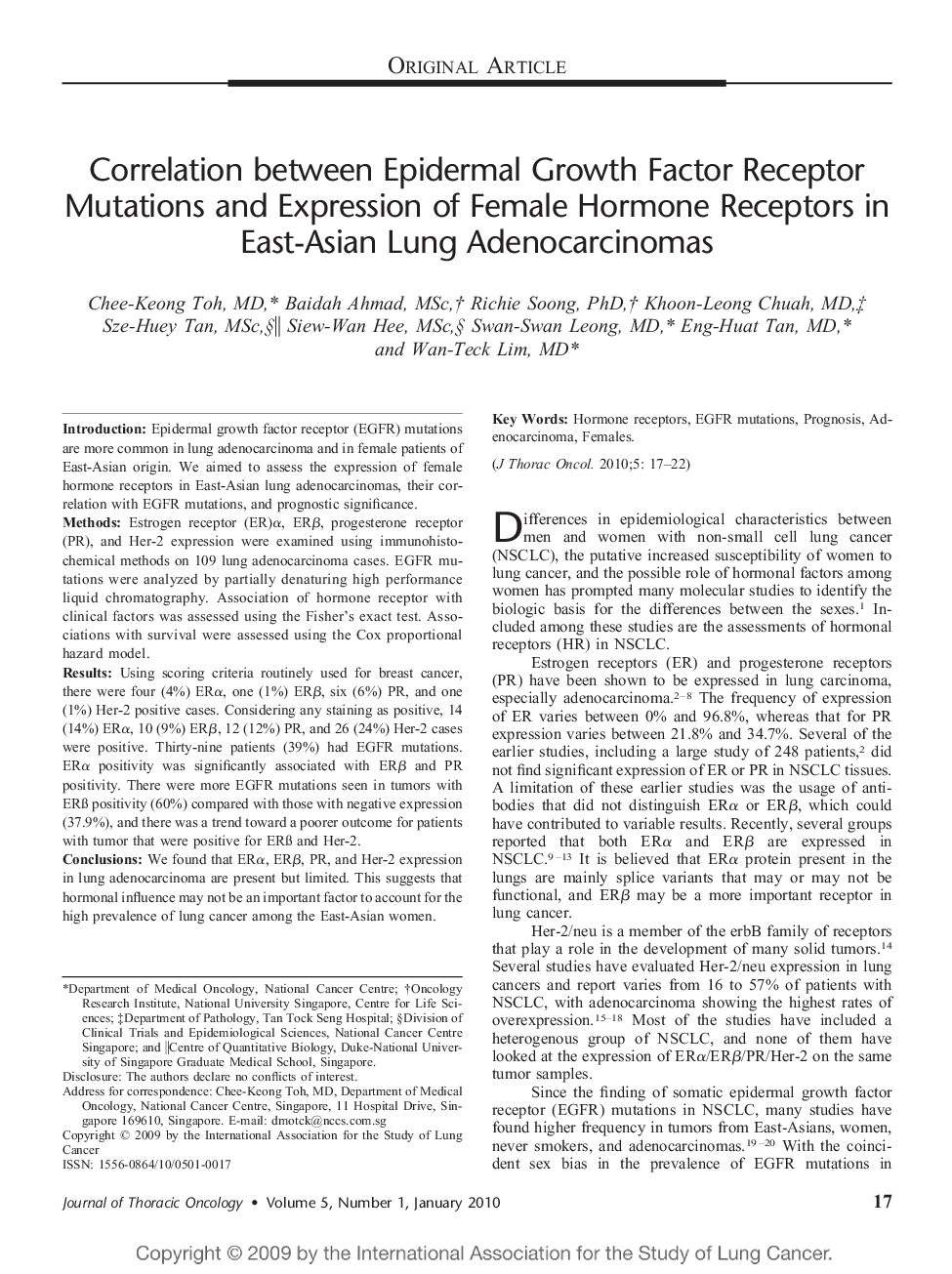| Article ID | Journal | Published Year | Pages | File Type |
|---|---|---|---|---|
| 3991987 | Journal of Thoracic Oncology | 2010 | 6 Pages |
IntroductionEpidermal growth factor receptor (EGFR) mutations are more common in lung adenocarcinoma and in female patients of East-Asian origin. We aimed to assess the expression of female hormone receptors in East-Asian lung adenocarcinomas, their correlation with EGFR mutations, and prognostic significance.MethodsEstrogen receptor (ER)±, ER², progesterone receptor (PR), and Her-2 expression were examined using immunohistochemical methods on 109 lung adenocarcinoma cases. EGFR mutations were analyzed by partially denaturing high performance liquid chromatography. Association of hormone receptor with clinical factors was assessed using the Fisher's exact test. Associations with survival were assessed using the Cox proportional hazard model.ResultsUsing scoring criteria routinely used for breast cancer, there were four (4%) ER±, one (1%) ER², six (6%) PR, and one (1%) Her-2 positive cases. Considering any staining as positive, 14 (14%) ER±, 10 (9%) ER², 12 (12%) PR, and 26 (24%) Her-2 cases were positive. Thirty-nine patients (39%) had EGFR mutations. ER± positivity was significantly associated with ER² and PR positivity. There were more EGFR mutations seen in tumors with ERß positivity (60%) compared with those with negative expression (37.9%), and there was a trend toward a poorer outcome for patients with tumor that were positive for ERß and Her-2.ConclusionsWe found that ER±, ER², PR, and Her-2 expression in lung adenocarcinoma are present but limited. This suggests that hormonal influence may not be an important factor to account for the high prevalence of lung cancer among the East-Asian women.
